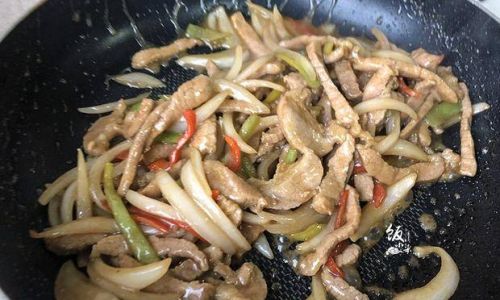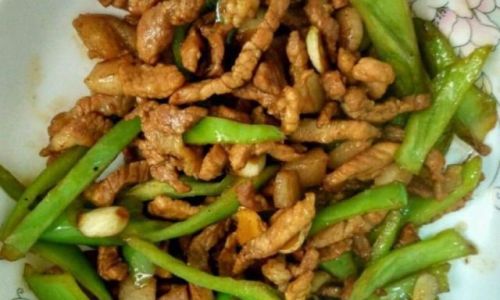Introduction
Stir-frying meat to achieve a perfectly tender texture is an art that many home cooks strive to perfect. Whether you’re preparing a quick weeknight dinner or a festive feast, nothing beats the satisfaction of biting into a moist, flavorful piece of stir-fried meat. However, achieving this level of tenderness can be challenging, especially if you’re not familiar with the nuances of meat preparation and cooking techniques. In this comprehensive guide, we’ll delve into the secrets of how to stir-fry meat until it’s soft and tender, ensuring every bite is a delight.
Understanding Meat Tenderization

Before diving into the specifics of stir-frying, it’s crucial to understand what makes meat tender. Meat tenderness is influenced by several factors, including the type of meat, its age, and how it’s been handled and cooked. Generally, younger animals produce more tender meat due to less collagen content. However, even within the same type of meat, there are variations in tenderness based on the cut.
Choosing the Right Cut
When stir-frying, opt for cuts that are naturally tender or those that respond well to quick-cooking methods. Examples include pork tenderloin, chicken breast (preferably air-chilled and boneless), beef sirloin, and flank steak. These cuts have a balance of muscle fibers and fat that makes them ideal for stir-frying.
Marinating for Flavor and Tenderness
Marinating is a vital step in achieving tender stir-fried meat. Marinades not only add flavor but also help break down muscle fibers, making the meat more tender. Here are some key ingredients and their benefits:
- Acids (Vinegar, Lemon Juice): These help tenderize by slightly denaturing proteins.
- Enzymes (Papaya or Pineapple Juice): Natural enzymes in these fruits break down proteins.
- Salt: Draws out moisture, which can then be reabsorbed with marinade, enhancing flavor and moisture retention.
- Oils: Prevent sticking and add richness.
- Aromatics (Garlic, Ginger): Add depth of flavor.
Marinate for at least 30 minutes, preferably in the refrigerator to prevent bacterial growth. For maximum tenderization, marinate overnight.
Slicing Techniques
Proper slicing can make a significant difference in the final texture of stir-fried meat. Always slice meat against the grain of the muscle fibers. This shortens the fibers, making the meat easier to chew and more tender. For instance, slice beef flank steak thinly across its grain, and chicken breast into strips or thin slices.
Temperature Control
The key to tender stir-fried meat lies in maintaining high heat throughout the cooking process. A hot wok or skillet ensures that the outside of the meat sears quickly, locking in juices and flavor. Preheat your cooking surface until it’s smoking hot before adding oil. Use a high-smoke-point oil like peanut, avocado, or grapeseed oil to avoid smoking and flavor loss.
Cooking in Batches
Overcrowding the pan can drop the temperature, leading to steam-cooking instead of stir-frying. This results in soggy, less tender meat. Cook meat in small batches, ensuring each piece has direct contact with the hot surface. This promotes even browning and caramelization, adding to the overall flavor and texture.
Using a High-Heat Cooking Technique

Stir-frying is a high-energy cooking method that requires constant movement. Once the oil is hot, add the meat and stir continuously with a spatula or wok spoon. This prevents any single piece from overcooking and ensures even cooking. Aim for an internal temperature of around 145°F (63°C) for medium-rare beef or chicken, and adjust according to your preference.
Resting the Meat
After stir-frying, let the meat rest for a few minutes. This allows the juices to redistribute, ensuring a moist, tender bite. Don’t skip this step, as it can make a significant difference in the final texture.
Sauces and Seasonings
While stir-frying, consider adding a bit of liquid (like soy sauce, broth, or rice wine vinegar) to create a steamy environment that helps cook the meat evenly without drying it out. Seasonings like soy sauce, oyster sauce, and hoisin sauce add flavor without overcooking the meat. Remember to add sauces towards the end of cooking to prevent burning and to maintain a glossy, appetizing finish.
Combining with Vegetables
Vegetables add color, nutrition, and texture to stir-fries. However, they often require different cooking times than meat. Add harder vegetables like bell peppers and carrots first, followed by quicker-cooking ones like snap peas and broccoli. Finally, incorporate the meat back into the wok for a quick toss to combine flavors and ensure everything is heated through.
Serving Tips
Serve stir-fried meat immediately to maintain its fresh, hot texture. Pair it with steamed rice, noodles, or a bed of greens for a balanced meal. Garnish with fresh herbs like cilantro, scallions, or sesame seeds to elevate the dish further.
Conclusion
Mastering the art of tender stir-fried meat takes practice and attention to detail, but the rewards are well worth it. By understanding meat tenderization, choosing the right cuts, marinating properly, slicing correctly, controlling heat, cooking in batches, resting the meat, and using the right sauces and seasonings, you can transform your stir-fries from good to great. With each attempt, you’ll refine your technique, moving closer to that perfect bite of soft, juicy, flavorful stir-fried meat. Happy cooking!






0 comments